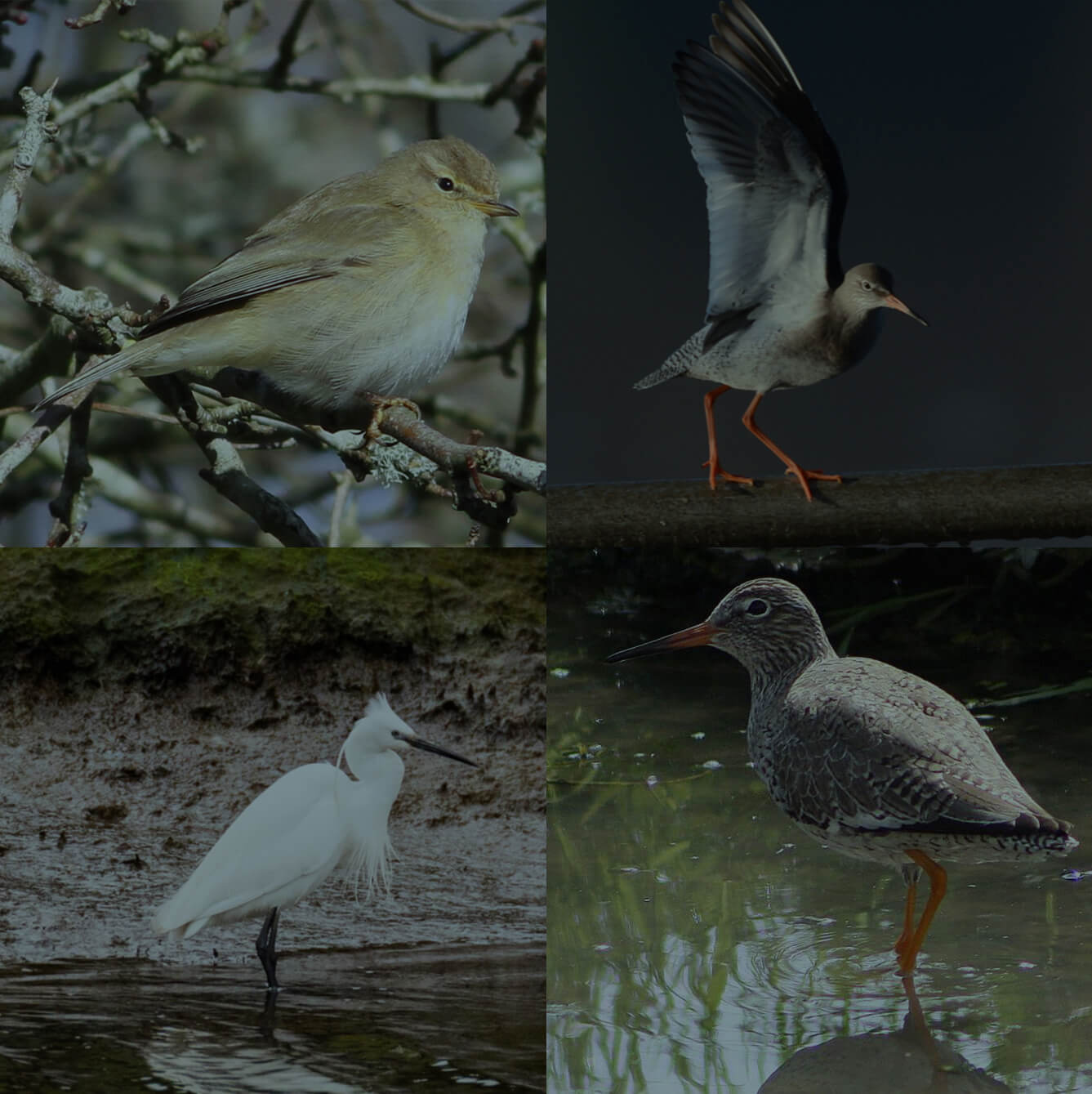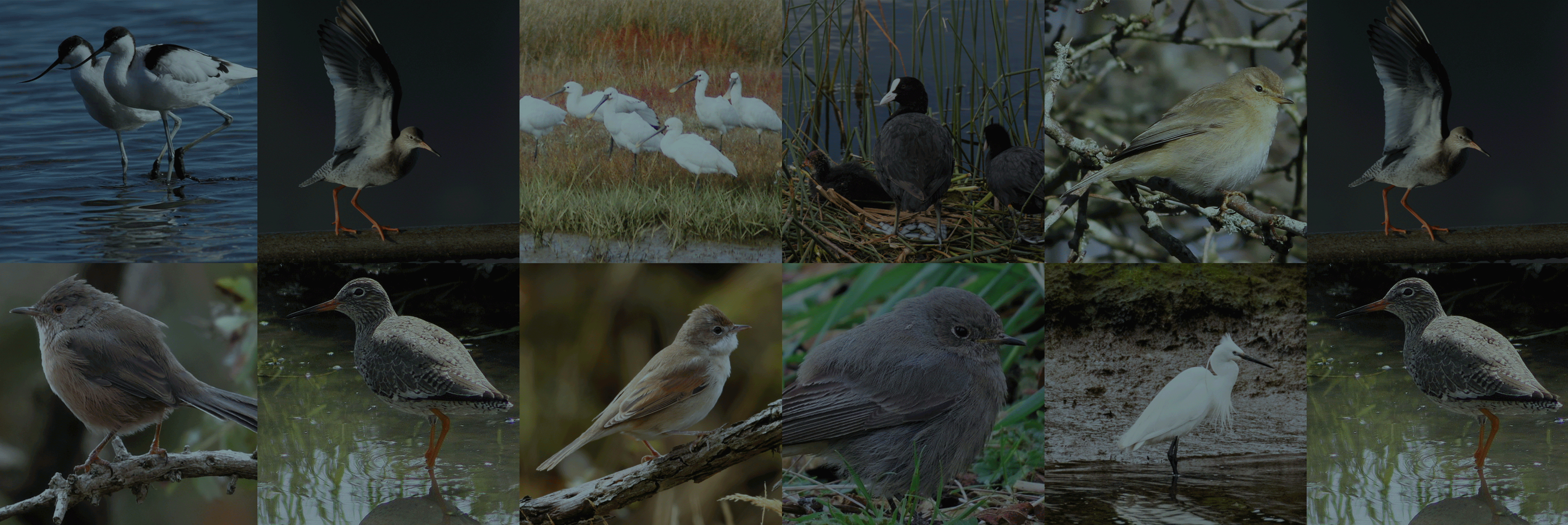An official account of all species that have been recorded and reported by birdwatchers and naturalists in the Poole Harbour area since records began.
The data for this list has been extracted from various sources, but George Greens 'The Birds of Dorset', Mansel-Pleydell's Birds of Dorsetshire, Naylor’s reference manual of rare birds and the back catalogue of Dorset bird reports have provided most information. Data is currently still being researched and records will be updated accordingly.
You can view this information in two different ways. Our alphabetical list provides information on the status of each species within the harbour, finder dates and names, photos and favoured locations. By clicking on the Systematic List button you will be presented the full Poole Harbour systematic list which includes status of species, pending records and historical accounts.
To date, 333 species have occurred and have been accepted within the Birds of Poole Harbour boundaries. A further 11 distinct subspecies have also been seen. In addition, we have two species/subspecies which have been recorded, but are awaiting acceptance by the appropriate records panel.
There are a handful of historical records, for which there is currently insufficient information to allow their inclusion onto the Poole Harbour list, but are believed to be genuine records. They are listed at the end of the list.
Finally, there are a number of feral or escaped species that have been recorded within the Birds of Poole Harbour boundaries. They are included for completeness, but are not included on the Poole Harbour list.
We would be interested in hearing details of any species that do not appeared on this list.
The Birds of Poole Harbour systematic list is a PDF which you can view by clicking on the button below. It was last updated on December 2019.
Full Poole Harbour Systematic List
Spotted Flycatcher
Latin Name
Muscicapa striata
Status
Summer Visitor & Passage Migrant
Site And Records Information
A late(ish) spring migrant with birds being recorded from late April as they breed sporadically around the harbour with 5-10 pairs in total. Most recently at Arne, Ridge, Slepe and Middlebere. More evident in autumn, from mid-August with Ballard, Sunnyside Farm, Slepe, Middlebere, Lytchett Fields, and the Greenland’s area being notable hot spots. During August and September can found in small groups of 2-10 birds.
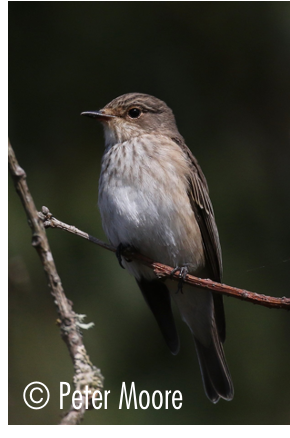
Spotted Redshank
Latin Name
Tringa erythropus
Status
Passage Migrant & Winter Visitor
Site And Records Information
The north-east corner of Holes Bay used to be an almost traditional wintering site with at least two each winter, but sadly none seem to visit there any more. The Brownsea Island lagoon from October through to March can hold between 5-15 birds. Birds on passage can turn up anywhere with Middlebere being a particular hot spot from July-Sept, Brands Bay and Arne Bay holding stunning summer plumaged individuals. Lytchett Bay used to be another Spotted Redshank mega spot but numbers from this site have dwindled down but regularly sees several during autumn passage on RSPB Lytchett Fields.
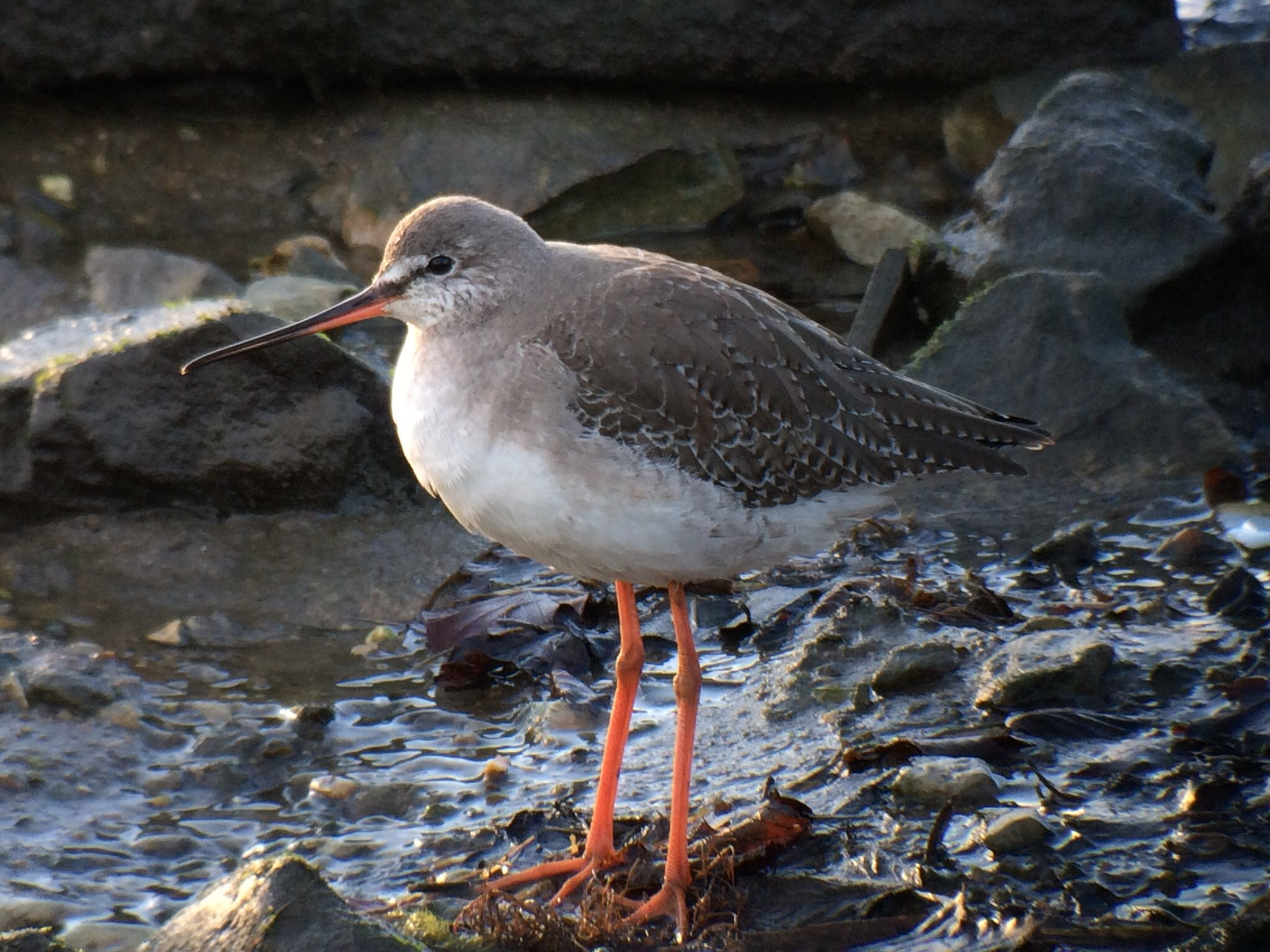
Spotted Sandpiper
Latin Name
Actitis macularius
Status
Vagrant
Site And Records Information
A fantastic find with a juv moulting into winter plumage found in Bramble Bush Bay on Nov 5th 2023 which stayed for the day feeding in the corner of the bay with Dunlin, Turnstone a few Redshank and a Knot! This was the first record for Poole Harbour and the 10th Dorset record.
1 on Nov 5th 2023 in Bramble Bush Bay, Studland (M.Wright)
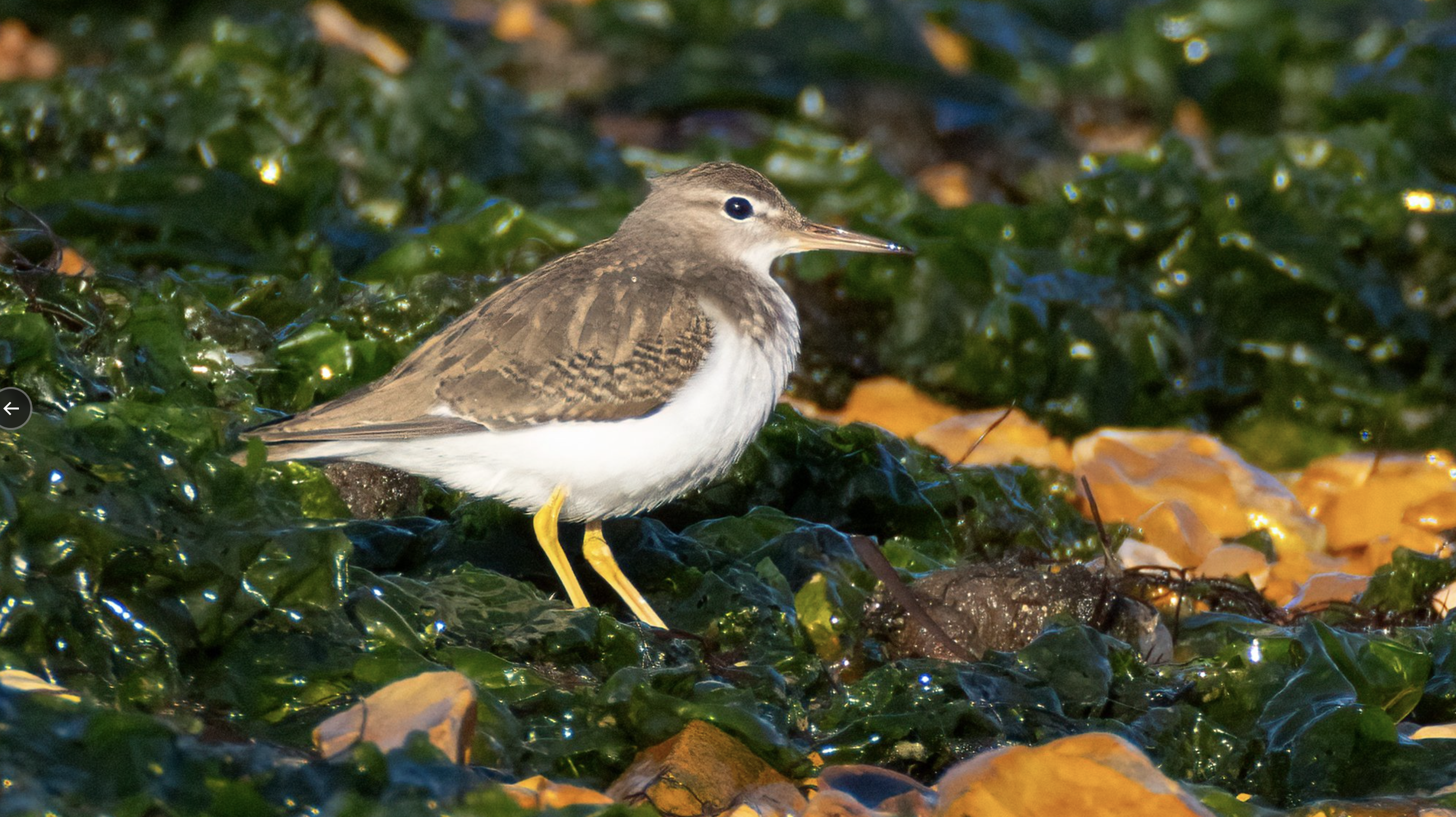
Squacco Heron
Latin Name
Ardeola ralloides
Status
Vagrant
Site And Records Information
Another much sought after bird in Poole Harbour. There was 1 present for a very short time on 21st September 2011 at Little Sea, Studland. Only one observer saw the bird and thankfully it was photographed. A real gripper of a bird and surely another is due soon?
There are also a couple of historical records too with 1 ‘at Wareham’ on 5th May 1855 and another at Brands Bay 17th January 1905
1 present for a very short time on 21st Septemeber 2011 at Little Sea, Studland
Starling
Latin Name
Sturnus vulgaris
Status
Resident
Site And Records Information
Breeds right across the harbour, but by far the most recent spectacular occurrence was during the hard winter when up to 80,000 birds could be seen wheeling above the Holes Bay/Sterte area of Poole. This flock consisted of post breeding local birds, mainly juveniles and then as the autumn/winter progresses these birds are joined by larger flocks off the continent. However winter flock sizes do seem to vary greatly each year with another murmuration forming at South Haven, Studland during the winter of 2016/17 where a flock of c15,000 Starling attracted a crowd nearly 1000 people by the end of the winter.
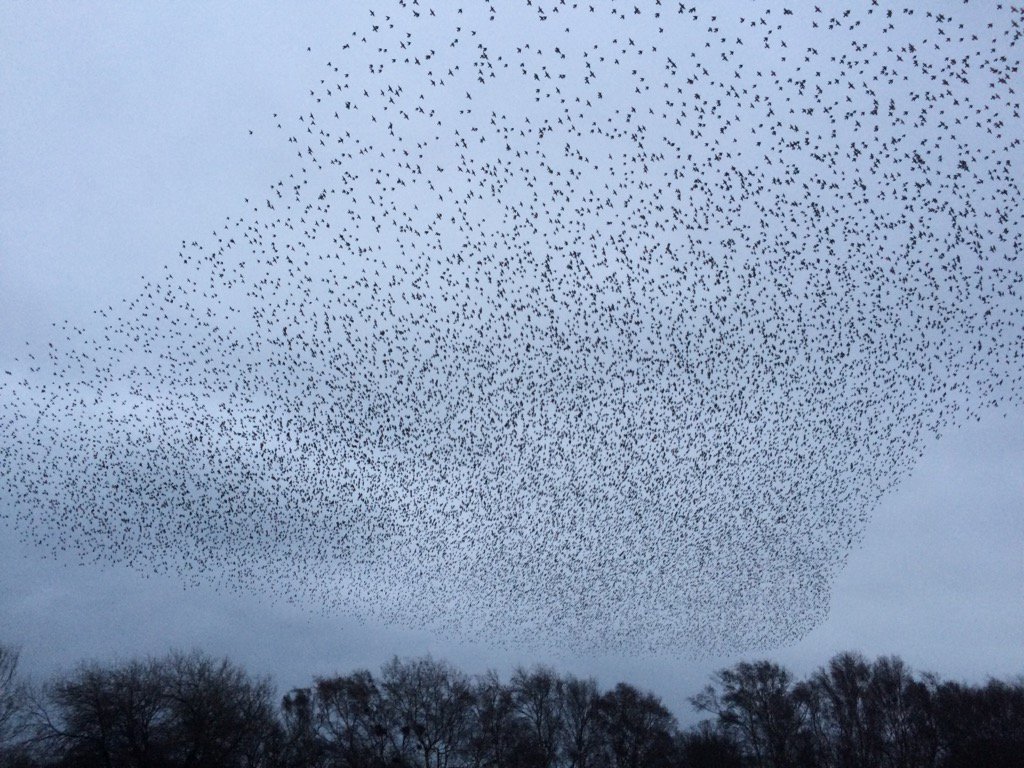
Stilt Sandpiper
Latin Name
Calidris himantopus
Status
Vagrant
Site And Records Information
A rare vagrant from the Nearctic, which has seen only 35 British records up to the end of 2016. There have only been 2 Poole Harbour records, however one spent almost two and a half months in the harbour having origiannly being found at Lytchett Fields before spending some time at Middlebere before finally ending up on Brownsea until it left on Dec 6th 2017 only to then be found at Christchurch harbour.
Ad on 12th – 21st Aug 2006 at Brownsea Lagoon (G Armstrong et al). The first Dorset record.
Juv on 21st Sept 2017 at Lytchett Fields (I Ballam, S Robson et al). This bird was discovered during an incredible run of rare waders across Dorset. Seen subsequently on 2nd and 7th Oct at same site.
Juv on 24th Sep 2017 – 2nd Nov 2017 at Middlebere Same as above
Juv on 24th Nov – 6th Dec 2017 (at least) at Brownsea (MJ Lawson et al). Same as above.
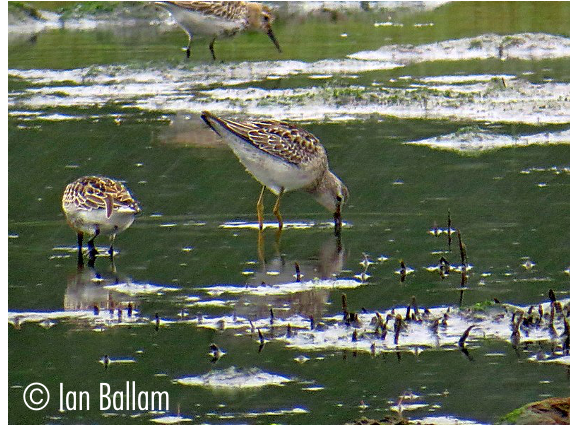
Stock Dove
Latin Name
Columba oenas
Status
Resident
Site And Records Information
Although quite shy, they are fairly regular around most of the harbour where they breed in open, rural areas. A large flock of around 40-50 birds historically spent the winter in and around the Arne/Middlebere area, but has not been for around ten years. The pools field at Lytchett Bay recently has up to 8 birds in late summer, with Upton Country Park, Studland and Hatch Pond having regular reports. Swineham GP and Holton Lee have also become very good for this species in recent years and in early November large numbers migrate across the harbour, often in tow of even larger numbers of Woodpigeon.
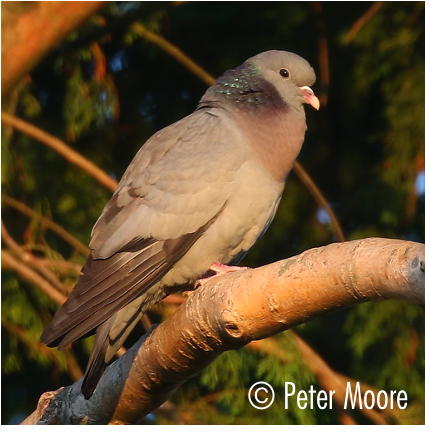
Stone Curlew
Latin Name
Burhinus oedicnemus
Status
Vagrant
Site And Records Information
A very difficult bird to catch up with in the harbour with most records consisting mainly of historic sightings, but there are some nice recent records too. With a good population breeding just north of Dorset in Wiltshire it’s amazing this species isn’t encountered more.
1 shot 10th Dec 1873 at Sandbanks
1 on 31st October 1948 on Newton Heath
1 on 3rd August 1958 over Ower and then landed on the heath
1 on 12th May 1985 over Brands Bog and towards Greenland’s Farm
2 on on 29th of October 1997 at Greenlands Farm flying in with Curlew
1 on 3rd May 1998 heard calling on the Arne approach road
1 on the 26th April 2004 on Broadstone Golf Course (T.Elborn)
1 on the 18th June 2019 flying north over Lytchett Heath – (S.Robson)
Stonechat
Latin Name
Saxicola torquatus
Status
Resident
Site And Records Information
More than 50% of the counties breeding birds used to be based in the harbour. Breeding sites include Studland Heath, Stoborough Heath , Arne, Upton Heath, Canford Heath, Hartland Moor, Holton Lee, Grange Heath and Godlingston. Passage birds occur from September onwards as birds move from various heathland sites further afield. In October small groups of between 2-10 Stonechat can be found together in rough scrub habitats with Hartland Moor, Slepe Heath, Arne the Frome Valley seeing recent feeding groups.
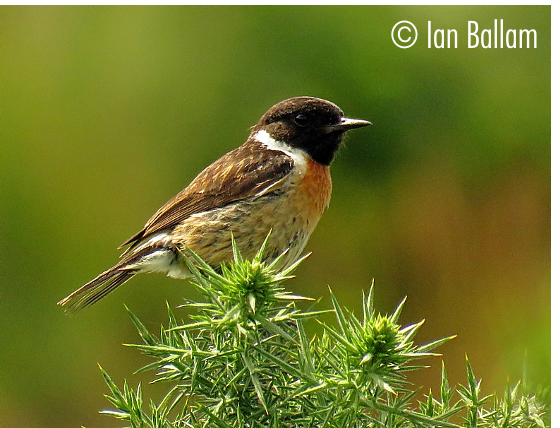
Storm Petrel
Latin Name
Hydrobates pelagicus
Status
Scarce Summer Visitor & Passage Migrant
Site And Records Information
South-easterly storms during May and July are best for driving European Storm Petrels into Poole Bay, and occasionally into the harbour itself. Mostly recorded from Branksome Chine, out in Poole Bay where birds can be watched lingering offshore, in high seas viewing is best achieved from Branksome Dene Chine which has a higher elevation. High counts from Branksome include 7 west on 23rd May 1996, 10 on 12th July 1998. In 2000 the record may have been broken with 16 noted between 30th Oct and 2nd Nov. Tony Wise mentions one on Brownsea in September 1964 and another was found feeding between Sandbanks and Brownsea Island on 25th Oct 1998.
Recent Records
2017
Branksome Chine 1 on 8th Jun.
2020
Bournemouth 1 W at Alum Chine on 25th Aug.
2021
Old Harry Rocks, 1 west 8th May
2023
Branksome Chine – 1 on 2nd Nov and 5 W on 4th Nov.
Poole Harbour – 1 on 9th Aug.
Subalpine Warbler
Latin Name
Sylvia cantillans
Status
Vagrant
Site And Records Information
Mostly reported during the spring, Subalpine Warbler are almost annual nowadays up on Portland Bill. However, they’re an exceptionally rare vagrant in Poole Harbour with only 1 incredible record of one in the PC World drain, behind Wessex Gate retail Park in the centre of Poole in April 2013.
1 on 19th April 2013 at the PC World outflow drain, eastern end.
Surf Scoter
Latin Name
Melanitta perspicillata
Status
Vagrant
Site And Records Information
An extreme vagrant to the harbour with only 2 records, this rare open sea duck could appear in any winter, especially after a stormy period with more now being disovered at sites further north in the UK.
2 present in Studland Bay Dec 2008 (N.Hopper)
1 female/1st year – Brands Bay on 07/11/13 then over-wintered until 5th April 2014 (P.Morton et al)
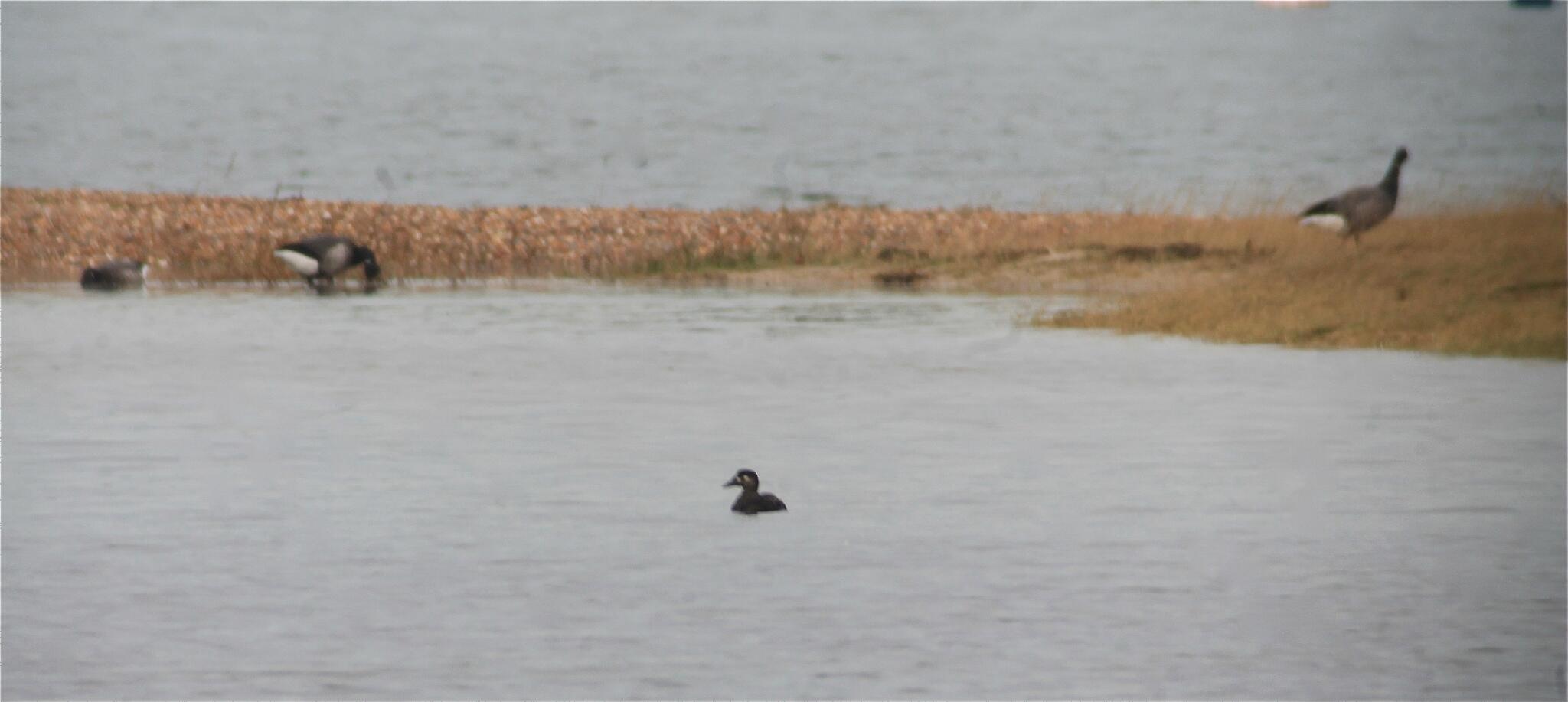
Swallow
Latin Name
Hirundo rustica
Status
Summer Visitor & Passage Migrant
Site And Records Information
Breeds all around the harbour with Arne, Upton Country Park, Studland, Lytchett Bay, Ridge and Slepe being regular sites. On passage large roosts of up to 10,000 have been recorded roosting in Poole Harbour reedbeds, but 500-1000 is more usual. Autumn passage runs all the way through September and October and sometimes into November. A Swallow seen from a public bird boat feeding over the Brownsea Quay on December 15th 2015 was pretty amazing. Upon arrival in spring, Swineham GP and the Poole Park Boating lake seem to see the first arriving Swallows as they feed up on flies before moving on.
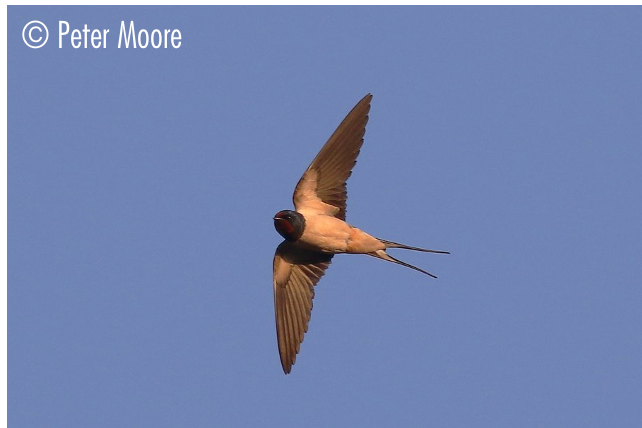
Swift
Latin Name
Apus apus
Status
Summer Visitor & Passage Migrant
Site And Records Information
Once common in large numbers above Old Town Poole and Wareham, now seen in much smaller numbers. Large groups of up to c200 birds can still be seen feeding above Swineham GP and Wareham Water Meadows on passage. Recently in June 2012, 750+ Swift were recorded feeding over Poole Park lakes. Their screaming calls over Old Town Poole in mid-summer are always a welcome sound.
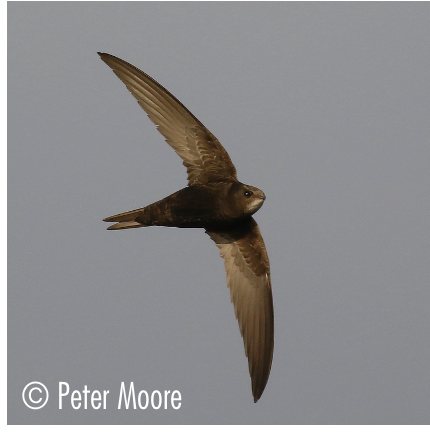
Call 01202 641 003
© 2025 Birds of Poole Harbour Registered Charity No. 1152615

